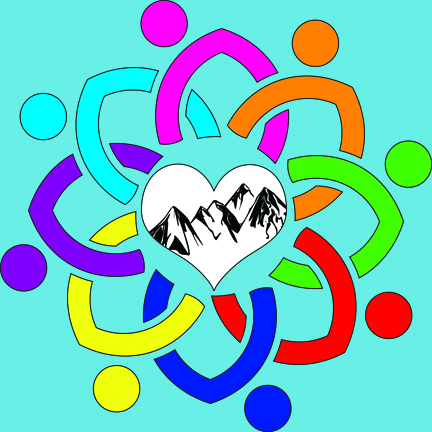Empowering Communities and Youth to Build Authentic Connections and Restorative Solutions
What is Restorative Justice in Education?
"The term restorative justice in education can be defined as facilitating learning communities that nurture the capacity of people to engage with one another and their environment in a manner that supports and respects the inherent dignity and worth of all." - Brenda Morrison
As an organization we strive to achieve this goal by building unique student driven curriculums specific for each school culture. Guiding the students, faculty, administration and parents through Restorative Justice practices. Including peer mediation, community building circles, restorative circles and group conferencing. All of these techniques support the values of Restorative Justice practices and help to build a cohesive caring learning environment for each community member.
Restorative Justice is a powerful tool that brings communities together, promotes accountability, teaches communication and leadership skills, and brings peace.
The Benefits
Restorative Justice programs in education can provide students with opportunities to test the consequences of their own decisions as implemented in their school community. Some of the most commonly identified benefits of peer mediation, Restorative Circles and Community Circles at the school level are:
o Stronger sense of peace and unity throughout the school community.
o Stronger sense of empathy and communication skills.
o The resolution of minor disputes that interfere with the education process without the need for administration.
o Problems are able to be settled before going to administration. Schools that have fully implemented this program have been able to reduce the number of cases seen by administration by as much at 95%.
o A stronger sense of cooperation and school community is achieved and school climate is improved through decreasing tension and hostility, and reducing the time that faculty and administration spend settling disputes.
o Peer mediators/facilitators and students who participate in restorative justice programming have been shown to demonstrate improved self-esteem and improved positive status among their peer group, as well as improved academic confidence.
o Peer mediators/ facilitators develop communication and leadership skills, as well as practical life skills. They often carry these skill sets beyond the school doors and into their families and communities, as well, helping to resolve problems more effectively than before.
o Perhaps the most beneficial aspect of a Restorative Justice program is the individualized, empowering experience that it offers to each student who utilizes it to resolve a conflict. Students are empowered to resolve their conflicts independently and responsibly, without adult intervention, which is a significant milestone for youth development.
Circles
Circles have many purposes but the two most common are, first to proactively build and strengthen the school community. When using the Circles model on a regular basis with students they build stronger bonds with each other, their teachers, and the greater school community. In a Circle, each participant has a chance to share and everyone else listens without interruption. This allows each participant to feel seen, to feel heard, to learn empathy, to grow connections, and even to grow affection with the other participants.
Secondly, a Circle can be restorative in the case of a conflict. Circles are different from mediation as everyone is on equal ground in a circle, including the facilitator. A restorative circle would be more appropriate for conflicts that have many parties, including bystanders and there are many aspects of the conflict that needs to be addressed. Circles can also be used as a preventative measure when tension is first sensed. If you are interested in learning how to facilitate Circles please check out our training events here.
Peer Mediation
Peer mediation is problem solving by youth with youth. It is a process by which two or more students involved in a dispute meet in a private, safe, and confidential setting to work out problems with the assistance of trained student mediators.
Peer Mediation is one way to focus students on a Restorative Justice Model. Restorative justice practices believe that consequences for student misbehavior (ie student-to-student conflict) should be 1. Focuses on repairing any harm caused; 2. Encourages students to take responsibility for their actions; and 3. Helps students learn to avoid such behavior in the future.
What kind of disputes can and cannot be resolved through peer mediation?
School-based peer mediation is most commonly used to help resolve issues that directly affect student relationships, such as:
o School rumors/ gossip
o Social networking and other Internet-based provocations
o Dissolution of friendships or romantic relationships
o Minor bullying/harassment
o Cheating on schoolwork
o Property theft
o Vandalism
o Confrontations that result from differences in race, culture, sexuality, religion, status, etc.
*Not all conflict cases are appropriate for peer mediation. Case types that should be immediately referred to school counselors, administration, and/or outside authorities, as each individual school’s policies dictate, include:
o Drug abuse/possession
o Weapon use/possession
o Sexual, physical, or emotional abuse/assault
o Suicide threats or attempts
o Any issue that might interfere with current or pending legal action or judicial rulings (such as restraining orders, etc.)
